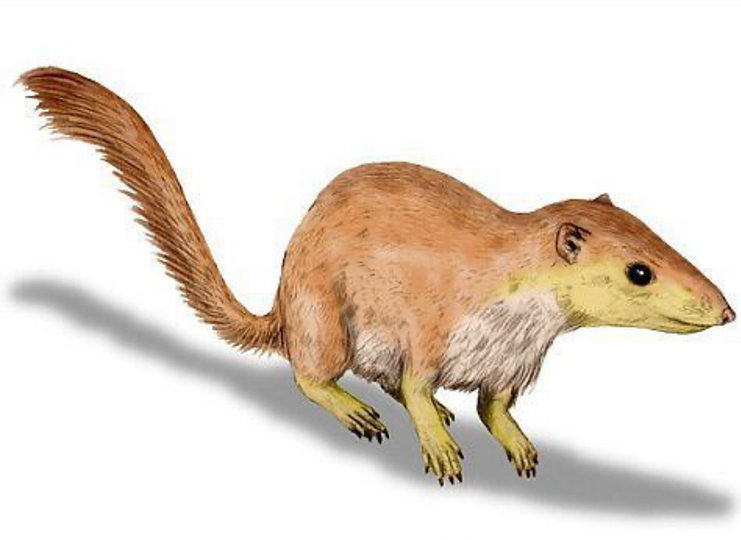Clay County Histories
Markus Krueger | Program Director HCSCC
Have you ever slumped down on the couch and wondered how you are ever going to get through this thing, whatever that particular thing might be? Perhaps you can take heart in the experience of some ancestors who made it through much worse. You, my friend, are directly descended from survivors of the worst day ever. Your ancestors made it through the asteroid impact that killed the dinosaurs 66 million years ago.
At that time, our grandmas and grandpas were small, furry, and adorable. At the end of the age of dinosaurs, our direct mammal ancestors looked like little red squirrels. Scientists named this species “Pergatorius,” but our family didn’t call each other anything back then because words weren’t invented yet (although I bet they were good at interpreting chirping noises).
Grandma and Grandpa Pergatorius were too small for Tyrannosaurus Rexes and most other dinosaurs to bother eating. They scurried around mostly unnoticed by the giant lizards and lived in underground burrows. They ate anything they could get their little fingers on – bugs, seeds, fruit, dinosaur eggs.
When an asteroid about 7 miles wide hit Mexico’s Yucatan Peninsula, it was the single worst day in the history of life. It was so bad that it made every day after that rotten for years. According to The Last Days of the Dinosaurs by Riley Black, it went something like this.
Grandma and Grandpa Pergatorius felt the ground shake in Montana about 15 minutes after impact, followed by a massive earthquake 10 minutes later. Luckly, they were far enough from the coasts to survive the tsunamis.
The blast ejected tons of the earth’s crust high into the atmosphere. It circled the globe before to earth, raining red-hot rocks and glass. There was enough falling debris to heat the air temperature hundreds of degrees. A forest fire spread around the world.
You are alive because your ancestors retreated underground into their burrows. Everybody who didn’t get underground or underwater died that day. Turtles and ancestral crocodiles submerged and held their breath as long as they could between gasps of foul, burning air. They were the largest land creatures to survive. Some birds made it through, but all of the other dinosaurs died in the heat spike and global fire. Triceratops and T. Rex had no burrows.
When there was nothing left to burn, your furry grandma emerged to a darker world. You know how it gets around here when there’s wildfires in Canada? Imagine if practically every plant on earth just burned. New plants had trouble emerging because the soot and debris in the atmosphere blocked about 20% of our sunlight for perhaps three years. Life in the water was no picnic either. The whole ocean food chain almost collapsed because the tiny little plankton at the base of it could barely get enough sunlight to photosynthesize.
Thankfully, Pergatoriuses were not picky eaters. Anyone with a specialized diet died in the three-year winter. Our ancestors ate whatever seeds and bugs they could find until the plants were reestablished and the food chain could restart.
When the sun returned, the plants and algae came back full force, but the whole world was different. Three quarters of plant and animal species were extinct and the quarter remaining just barely made it. On land, probably everything bigger than a cat was gone. But the little guys didn’t have dinosaurs to get in their way anymore, and the future was theirs.
When you’re having a hard day, take solace in knowing that you come from a long, long line of tough cookies, including some who made it through the worst day ever.


